In a knitting pattern, ease refers to how loose or tight a garment is. Designers write their patterns with a particular "fit" in mind, and will base their numbers for each size on whether they want their garment to be loose, tight, or otherwise.
How do you know what ease a pattern is written in?
Any good pattern will have a garment schematic. Referring to this garment schematic will show you the numbers the designer has calculated for the finished size of the garment, not the human (or dog, cat, bird, reptile, and so on!) who will be wearing the garment.
A designer may also choose to add notes or suggestions to the pattern. Check these as well for any ease information.
How do you choose your preferred ease?
Each pattern and person will be a different case, but as a general rule, ask yourself these questions:
-Do I like the way the garment is fitting the model in the pattern photograph?
-Do I want the garment to fit me in the same way that it fits the model in the pattern photograph?
-What information does the designer provide/suggest in any pattern notes?
-What do the garment schematic numbers tell me?
What does negative ease look like?
A negatively eased pattern is a garment that is designed with dimensions that are smaller than the intended wearers' actual body size. Negatively eased garments can, of course, run the gamut from body skimming (just an inch or so less than your actual measurement), to snug (up to around 5" smaller than your actual measurements) to really rather tight! (generally, 6" or more smaller than your actual measurements).
The number of inches of negative ease will also, in some cases, be effected by the gauge of yarn being used (for example, extremely bulky yarn, in a elastically-inclined fibre, will want even up to 10" of negative ease in order to fit snugly).
For illustrative purposes, here are a few images of the same sweater pattern, Corona, in a variety of negative ease sizings:

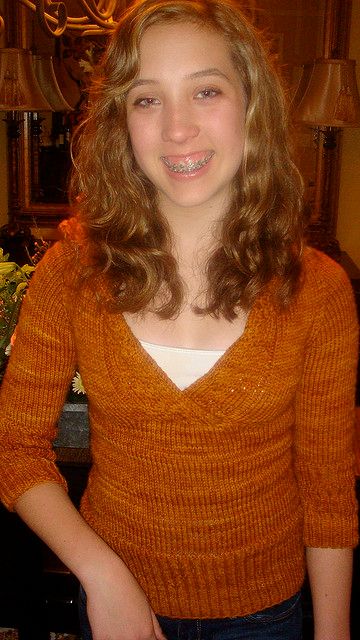
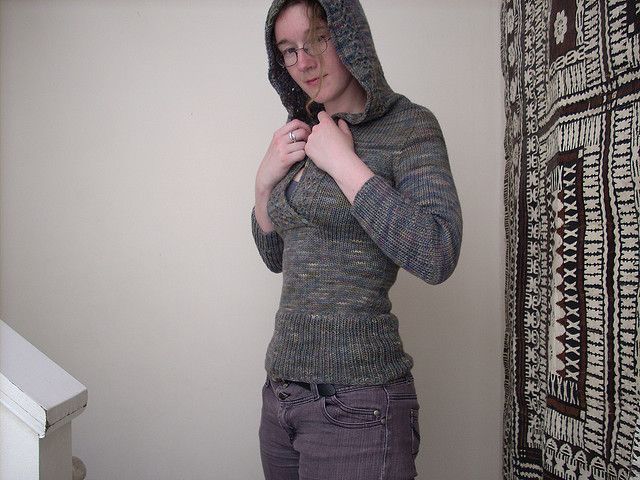
What does zero ease look like?
Zero ease is a garment that has the same numbers as your actual measurements.
If the schematic shows that the cross-bust measurement is 16”, and you happen to be a 32” bust, then the finished garment will be the very same size that you are (that is, it will have zero ease).
Zero ease garments hang close to your body, without being snug or tight.
See examples of the same Corona pattern, but knit with zero ease.
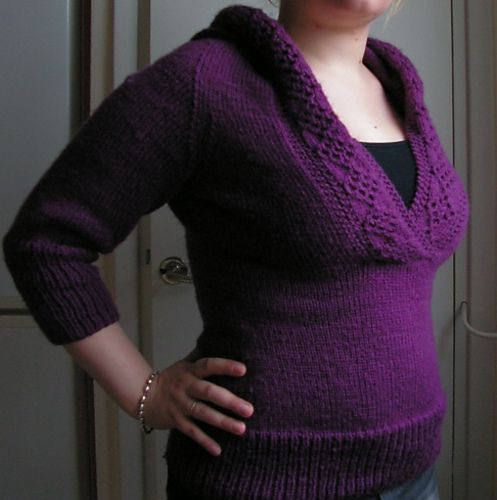
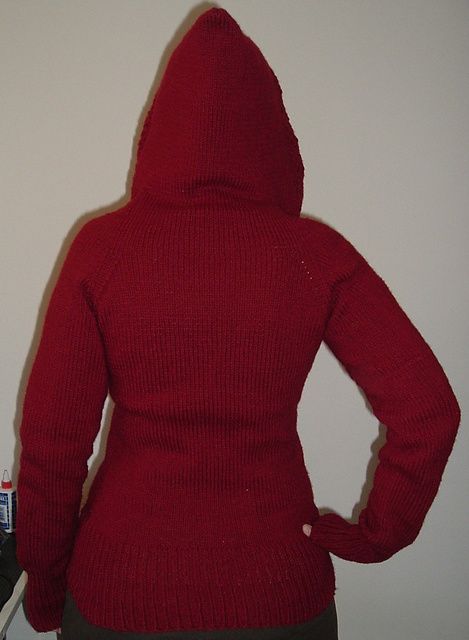
What does positive ease look like?
A positively eased pattern is a garment that is designed with dimensions that are larger than the intended wearers' actual body size. Positively eased garments can range from almost-body skimming, to loose and comfy, to definitely over-sized.
Here, a selection of the same sweater to demonstrate a variety of positive ease.
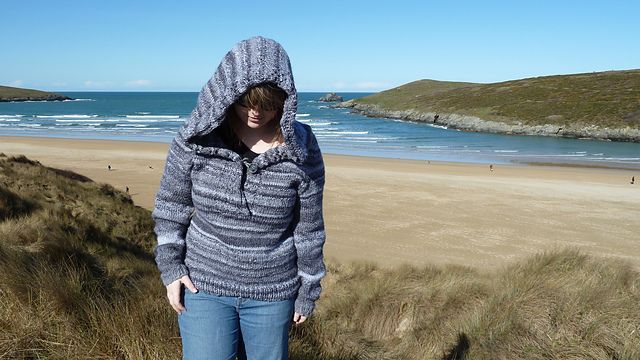
WorstedKnitt's positively-eased Corona (blog here: WorstedKnitt).
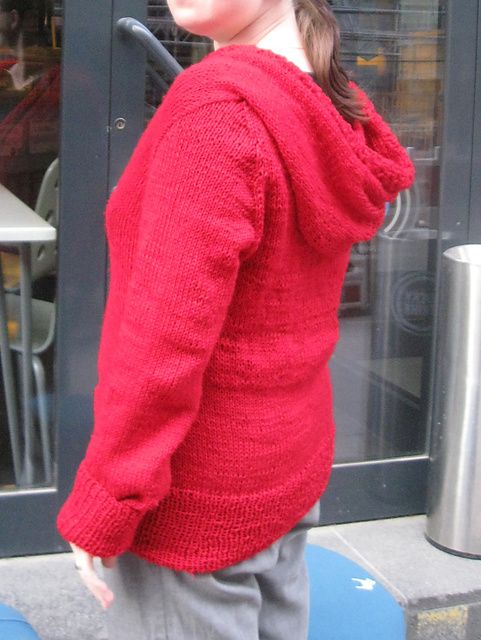
2muchfun's positively eased sweater.

2muchfun's positively eased sweater.
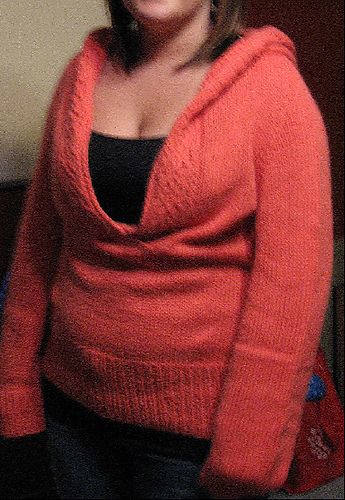
This can be an easy fix.
Firstly, check the garment schematic. Sometimes it's as simple as going up a size or two. You can do this by checking the numbers you see on the schematic, and comparing them to your own body measurements.
If this solution isn't a possibility, you have other options:
-going up a needle size/yarn weight
-doing some math (any good pattern has the basic tools you need to do this, including gauge and the garment schematic)
-and, the always fantastic and helpful Ravelry. If you're lucky, there's another knitter out there who's posted their modification notes - perhaps you can even ask them yourself!
-and certainly, the designer can be of help her/himself.
Any other questions about negative ease?
Please check out CanaryKnits on Facebook, or ask here. I'm always happy to help!

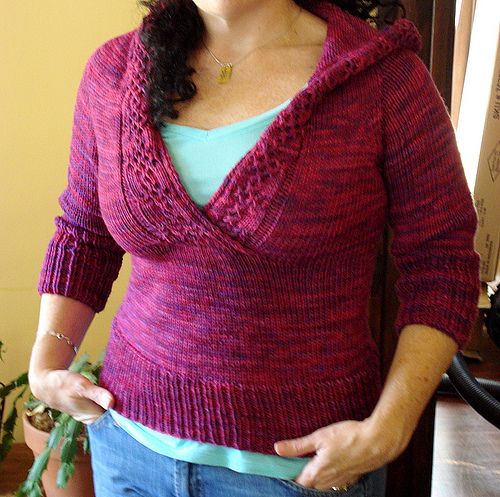

5 comments:
This is a VERY helpful post! Thank you so much!! May I link to this post in my blog?
Thank you so much for your posting this. I read patterns all the time that say something along the lines of 'made with so much negative ease' and I never really understood it. I got the jist, of course, but your post really helped me to understand it now. The pictures really helped as well. Thanks again!
what an awesome post!! this is such helpful info, and I love how you have such great examples and photos to demonstrate exactly what you mean. Awesome!
Long-time lurker but coming out of hiding to thank you for this post on ease. Your descriptions and accompanying pictures are helpful beyond belief. Thank you !!!
this is very helpfull!!! I didnt'know it was this simple... In dutch it is called otherwise.
Post a Comment